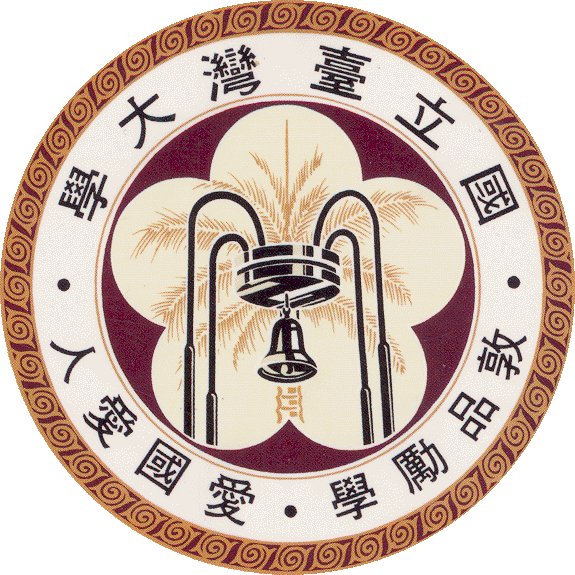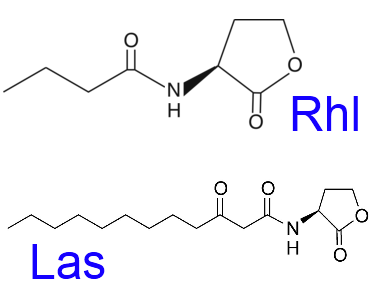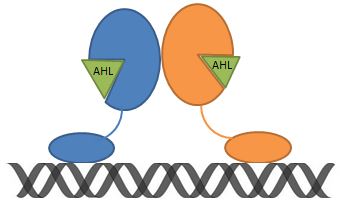Team:NTU-Taida/Project/Target
From 2013.igem.org
| Line 21: | Line 21: | ||
[[File:NTU-Taida-target-3.jpg|700px|thumb|center|Figure.3]] | [[File:NTU-Taida-target-3.jpg|700px|thumb|center|Figure.3]] | ||
| - | |||
| - | |||
{{:Team:NTU-Taida/Templates/ContentEnd}}{{:Team:NTU-Taida/Templates/Footer|ActiveNavbar=Project}} | {{:Team:NTU-Taida/Templates/ContentEnd}}{{:Team:NTU-Taida/Templates/Footer|ActiveNavbar=Project}} | ||
Revision as of 01:09, 25 September 2013
Project Target Molecules
Quorum sensing signals can be transmitted through several types of molecules. In our project, we use Rhl, Las and PQS quorum sensing signals as our target. Both Rhl and Las systems use acyl homoserine lactones (AHLs) as quorum sensing targets, while PQS uses 2-heptyl-3-hydroxy-4-quinolone as its QS target.
Acyl-homoserine lactone
Environmentally, when bacterial concentration is low, quorum sensing related genes are expressed at minimum level. As bacterial density increases, AHL concentration also increases and therefore binds with their target receptors which act as transcriptional regulators to enhance target gene expression. In gram negative bacteria, we use AHLsIn our project, we constitutively express these AHL receptors(such as RhlR and LasR), and add the promoter sequences of these receptors in front of fluorescent reporters.
AHL binding and quorum sensing transcriptional regulator
Rhl transcriptional regulator senses C-12 acyl homoserine lactone. The structure of the transcriptional regulator consists of an N-terminal ligand-binding domain and a C-terminal DNA binding domain. The length of the AHL acyl group plays a critical role in quorum sensing specificity. Las transcriptional regulator has similar characteristics.
Due to the fact that quorum sensing genes are highly related to bacterial resistant factors, we want to sense the expression of AHL of resistant bacteria and create novel data for further bacterial identification. Our final goal is to collect enough data to create a quorum sensing array that provides instant identification of bacterial species.
 "
"





